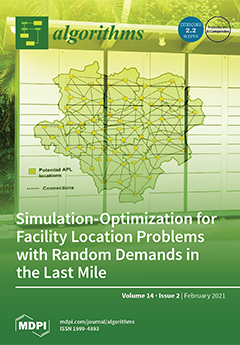For a given positive integer
k, the
k-circle formation problem asks a set of autonomous, asynchronous robots to form disjoint circles having
k robots each at distinct locations, centered at a set of fixed points in the Euclidean plane. The robots
[...] Read more.
For a given positive integer
k, the
k-circle formation problem asks a set of autonomous, asynchronous robots to form disjoint circles having
k robots each at distinct locations, centered at a set of fixed points in the Euclidean plane. The robots are identical, anonymous, oblivious, and they operate in Look–Compute–Move cycles. This paper studies the
k-circle formation problem and its relationship with the
k-epf problem, a generalized version of the embedded pattern formation problem, which asks exactly
k robots to reach and remain at each fixed point. First, the
k-circle formation problem is studied in a setting where the robots have an agreement on the common direction and orientation of one of the axes. We have characterized all the configurations and the values of
k, for which the
k-circle formation problem is deterministically unsolvable in this setting. For the remaining configurations and the values of
k, a deterministic distributed algorithm has been proposed, in order to solve the problem. It has been proved that for the initial configurations with distinct robot positions, if the
k-circle formation problem is deterministically solvable then the
k-epf problem is also deterministically solvable. It has been shown that by modifying the proposed algorithm, the
k-epf problem can be solved deterministically.
Full article





